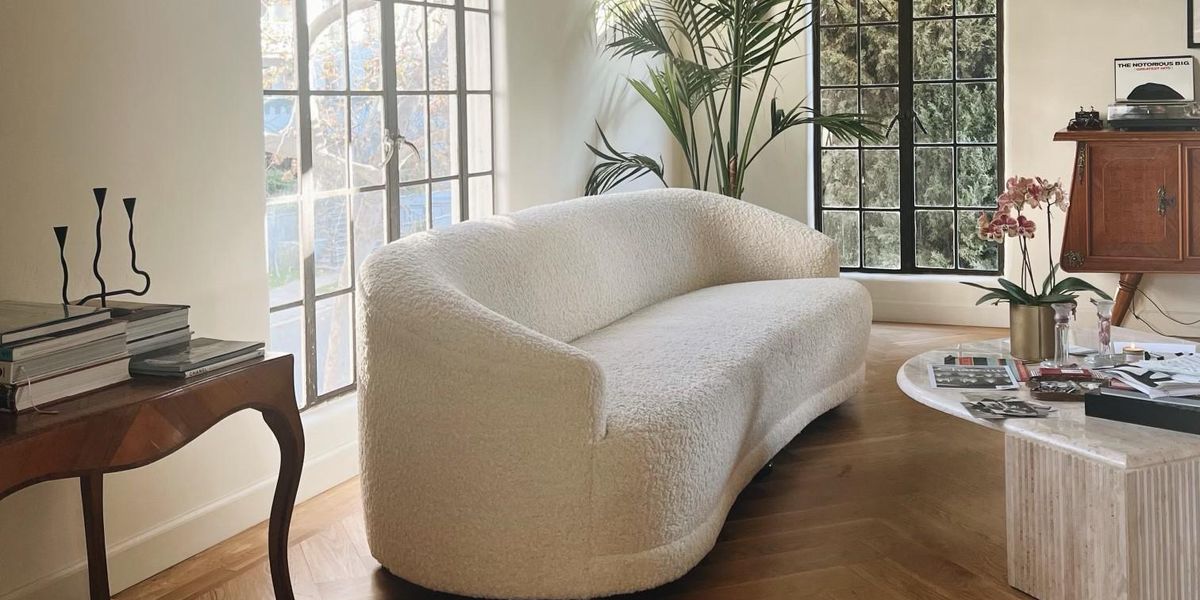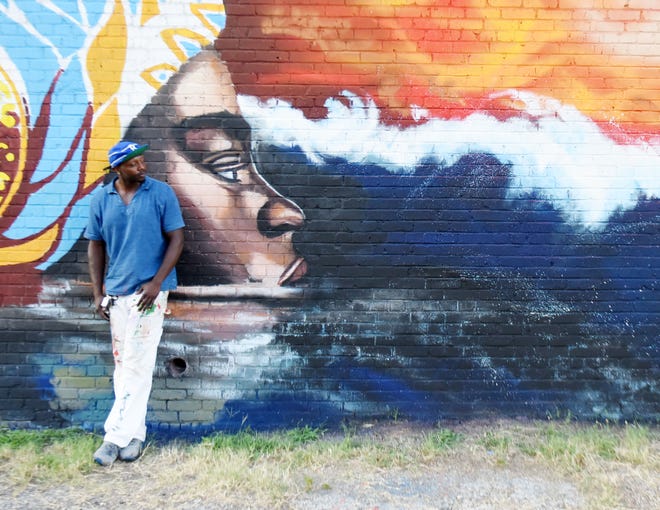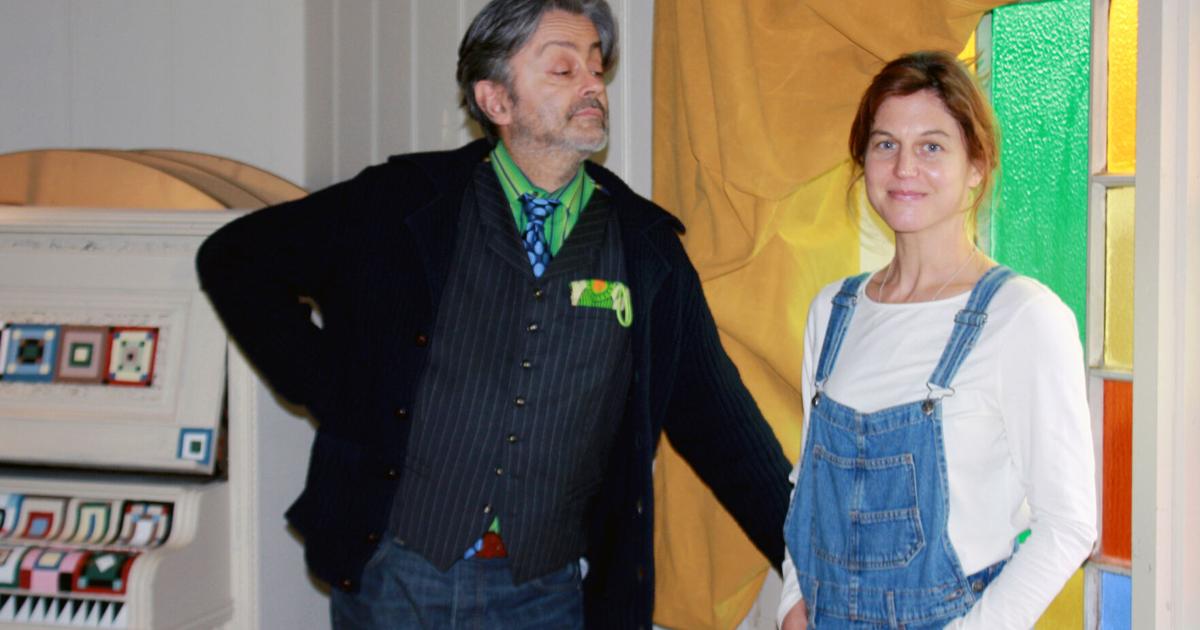MONTGOMERY – For nearly two centuries, Kelton Hall has stood through cycles of small-town change. His latest exhibition today celebrates his own renaissance and that of the world around him.
After nearly two years of COVID-19-induced closure, Montgomery Center for the Arts reopened to the public on Friday for the opening reception for “Soul Work,” an exhibit featuring the photographed nature mandalas of Montgomery artist Crissie Kovacs.
“Soul Work” is to be reviewed this weekend, from 12 p.m. to 4 p.m., Saturday April 30 and Sunday May 1.
When curator Sebastian Araujo first saw Kovacs’ work, he was struck by how his themes of healing and connection aligned with the reopening and rebirth of the center.
“We’ve been closed for a year and a half, so I thought what better way to open it than to open it with something that was alive?” said Araujo to the Messenger.
A geometric and often circular configuration of symbols, mandalas are associated with meditation and contemplation in Hindu and Buddhist cultures. Kovacs, a multimedia artist and University of Vermont graduate, has found solace in mandalas during the pandemic.
Created from natural elements – found leaves, sticks, flower petals, moss and grasses – then photographed, her mandalas celebrate both the symmetry and diversity of the Earth through color and texture.
“There’s also an element of letting go,” Kovacs said, explaining that after capturing the mandala in a still image, she lets it be swept away by the elements. “I like that vulnerability in that regard.”
The photographed nature mandalas on display are a combination of those made by artist Crissie Kovacs in Roanoke, Virginia and Montgomery, Vermont.
Araujo, too, is similarly fascinated by what MCA can be when caught up in the tide of community. Located inside Kelton Hall, a once empty 1860s Baptist church, the center has evolved significantly since it opened in 2016. Prior to the pandemic, the MCA held 30 to 40 exhibitions, workshops and projects each year.
“We are still dischurching this place, legally and psychologically,” Araujo said. “And I think to know where we’re going, we have to have an idea of what it was like.”
The artist’s journey
While some of the nature mandalas featured in “Soul Work” were created in Montgomery, others were made in Roanoke, Virginia, where Kovacs lived until about a year ago.
As artist-in-residence at the Carilion Clinic Hospital’s Healing Arts Program, Kovacs has installed nature mandalas outdoors in the healing garden, curated a large-scale photography exhibit inside the hospital and created a mandala mural for the employees.
Primarily a photographer and ceramist, making mandalas was new to Kovacs and came to her during the pandemic when she took her young son for walks in the forest.
“He was two years old at the time, so there were a lot of stops, questions and remarks,” she recalls. “He was playing in the stream or on the playground, and I was doing these little circle creations, and it just evolved into a real passion.”

Photographs of Crissie Kovacs’ mandalas await hanging at the Montgomery Center for the Arts on April 21.
Now living in Montgomery with her son and husband, she has been able to further combine her passion for art and nature by working on a nearby farm and collaborating with MCA on early childhood education programs.
“It’s become a real joy to work and play,” Kovacs said.
The curator’s vision
Prior to the opening reception, Araujo helped Kovacs hang his prints in the large center gallery. With a gift for visual and verbal storytelling, he matched the colors and shapes to the colored glass of the windows.
Seven years ago, Araujo moved with her husband from Cape Cod to Montgomery. Both New York natives, they followed a long train of friends to Green Mountain State after falling in love with the area over Thanksgiving.
“There’s something about Thanksgiving and Vermont that seems to make sense,” Araujo said, sitting on the windowsill in a suit vest, jeans and a bright green button-down. “You know, like they talk about April in Paris and Christmas in New York, but I feel like Thanksgiving should still be here.”
Shortly after moving to Montgomery, Araujo attended a Town Meeting, where – purely out of curiosity – he asked what was going on with the dilapidated Greek Revival structure at the top of Main Street.
“I talked about it, and somebody said, ‘Well, nobody’s doing anything. What do you want to do with it?'” he recalled. “And I said, ‘I don’t know what i want to do with it, it just looks like it’s falling apart.””

Located at the top of Main Street in Montgomery, the Center for the Arts has moved into a former Baptist church.
A former creative director of the now-closed Barneys New York, Araujo studied art history at Parsons School of Design and worked for a brief period at the Metropolitan Museum of Art. In Montgomery, he quickly found a like-minded, art-driven community to help revitalize the abandoned building.
Araujo is now a member of a five-member non-profit MCA Board of Directors that has organized exhibits and community programs like paint-and-sip, jazz concerts, a winter farmer’s market, performances dance classes and summer camps for children.
A coveted $50,000 Paul Bruhn Historic Preservation Grant, received by MCA in 2021, will contribute to the continued restoration of the building. The grant will be used this year to carry out exterior repairs, including painting. The next project, Araujo said, will be to rebuild the porch and restore the windows.
Araujo has big dreams of making the MCA the next Vermont Studio Center, a nonprofit arts organization in Johnson that has the nation’s largest artist and writer residency program.
“One day we’ll be Montgomery’s Studio Center, even though I heard that name is copyrighted, we won’t call it that,” he said with a laugh.
Although hundreds of people have participated in MCA programs over the years, not everyone is thrilled to see the church become an arts and community center. Just a few weeks ago someone left a threatening note on the door and fired a pellet gun at the windows, smashing several panels.
While these incidents are disheartening, Araujo is a New Yorker who can walk through this with confidence, just as he has other challenges in his life.
“Once you realize that there have always been crazy people blowing up the world, you realize that’s going to change again too. And that’s why such work,” he said pointing to the Kovacs’ mandalas, “is really important. To me, things like this are very aesthetic and somewhat esoteric, and they’re not permanent. Because nothing is, is it?”









